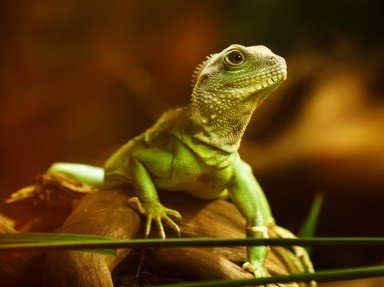Quiz Answer Key and Fun Facts
1. What is the scientific name for the bearded dragon?
2. What country are bearded dragons native to?
3. How many known species of bearded dragon are there in the early twenty-first century?
4. Besides their colour differences, a reliable way to tell apart an Eastern bearded dragon from its close relative, the Central bearded dragon, is to observe a pale blue, yellow or green marking which appears on what part of their body as they get older?
5. Only male bearded dragons have beards.
6. Bearded dragons go through a stage of sleeping, not eating and eating less for around three months during winter. What is this called?
7. Bearded dragons are venomous.
8. What is the most common type of bearded dragon, out of all the species, as a pet?
9. When a bearded dragon waves it could be trying to communicate what?
10. As pets, bearded dragons are best kept in groups.
Source: Author
LuH77
This quiz was reviewed by FunTrivia editor
rossian before going online.
Any errors found in FunTrivia content are routinely corrected through our feedback system.

